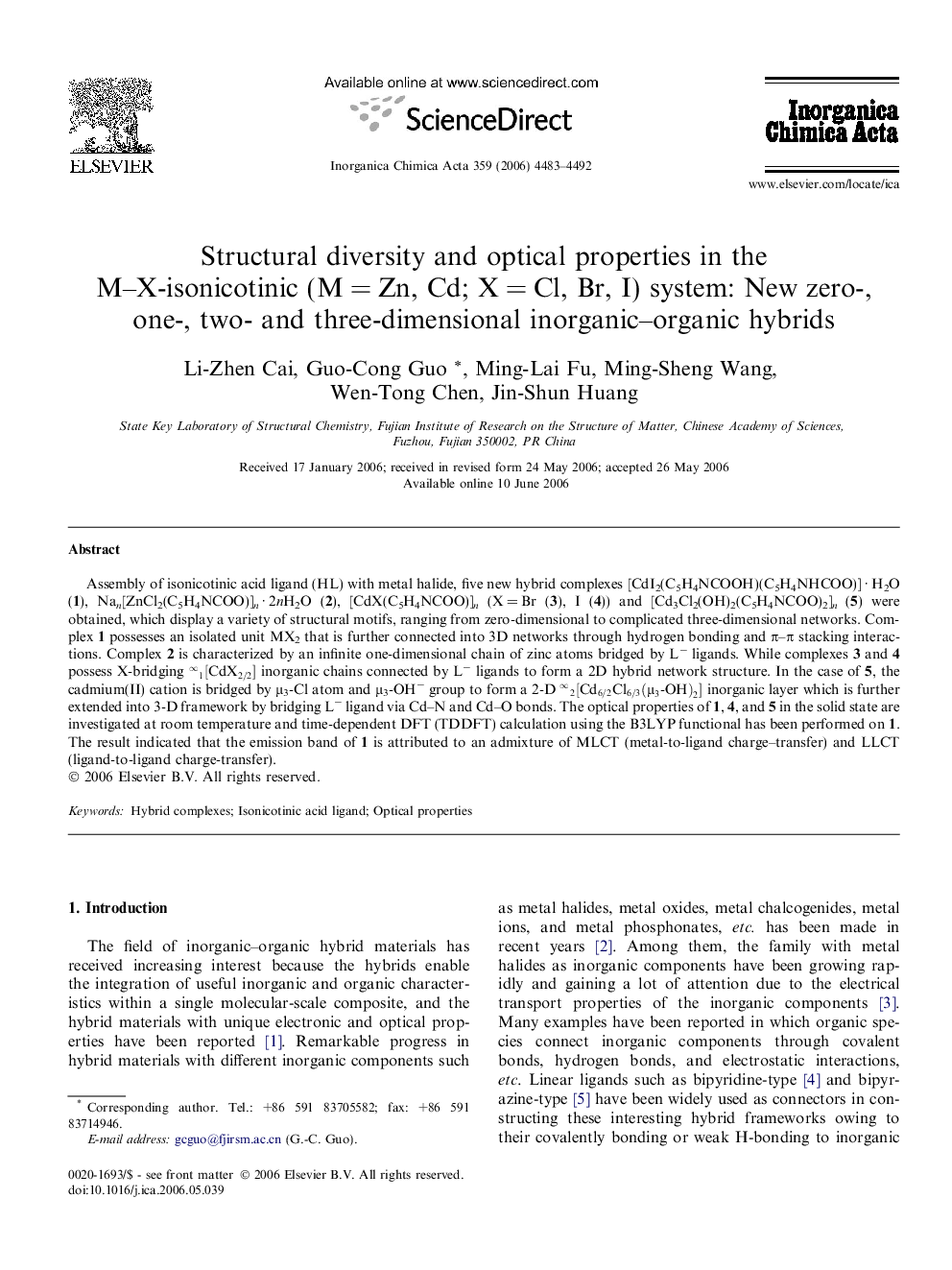| Article ID | Journal | Published Year | Pages | File Type |
|---|---|---|---|---|
| 1312819 | Inorganica Chimica Acta | 2006 | 10 Pages |
Assembly of isonicotinic acid ligand (HL) with metal halide, five new hybrid complexes [CdI2(C5H4NCOOH)(C5H4NHCOO)] · H2O (1), Nan[ZnCl2(C5H4NCOO)]n · 2nH2O (2), [CdX(C5H4NCOO)]n (X = Br (3), I (4)) and [Cd3Cl2(OH)2(C5H4NCOO)2]n (5) were obtained, which display a variety of structural motifs, ranging from zero-dimensional to complicated three-dimensional networks. Complex 1 possesses an isolated unit MX2 that is further connected into 3D networks through hydrogen bonding and π–π stacking interactions. Complex 2 is characterized by an infinite one-dimensional chain of zinc atoms bridged by L− ligands. While complexes 3 and 4 possess X-bridging ∞1[CdX2/2]∞1[CdX2/2] inorganic chains connected by L− ligands to form a 2D hybrid network structure. In the case of 5, the cadmium(II) cation is bridged by μ3-Cl atom and μ3-OH− group to form a 2-D ∞2[Cd6/2Cl6/3(μ3-OH)2]∞2[Cd6/2Cl6/3(μ3-OH)2] inorganic layer which is further extended into 3-D framework by bridging L− ligand via Cd–N and Cd–O bonds. The optical properties of 1, 4, and 5 in the solid state are investigated at room temperature and time-dependent DFT (TDDFT) calculation using the B3LYP functional has been performed on 1. The result indicated that the emission band of 1 is attributed to an admixture of MLCT (metal-to-ligand charge–transfer) and LLCT (ligand-to-ligand charge-transfer).
Graphical abstractFive new inorganic–organic hybrids composed of group 12 metal halide and isonicotinic ligand have been synthesized and optical properties for some complexes have been studied. The structure diversities of the present compounds are influenced by the coordination numbers of M2+ and the bridging modes of X− ions and HL ligand.Figure optionsDownload full-size imageDownload as PowerPoint slide
